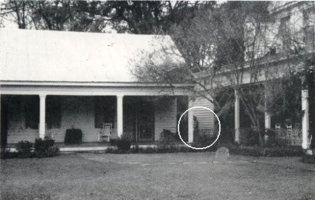Hello Marion Morrison, a other place...
The story of Drury Lane and his ghosts ....
Queen Victoria at the Theater in 1888
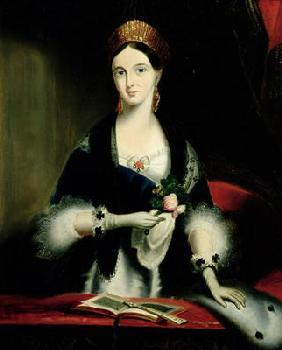
Le théatre
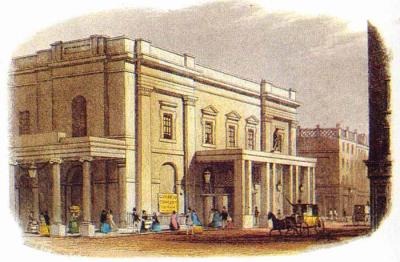
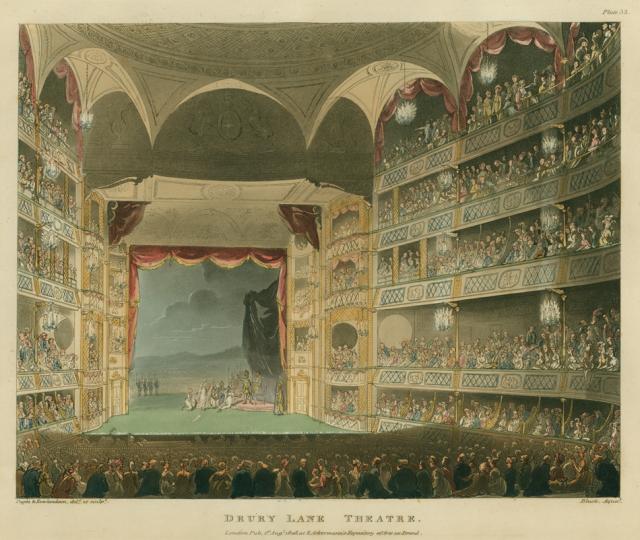
Different ghosts are supposed to haunt the old and venerable theater of Drury Lane in London. The most famous of them is the Man in Gray. This particular spirit is atypical in the sense that it is regarded rather as a fortunate omen than as a sign of ill omen or unhappiness. An offer of exorcism concerning this ghost was once rejected by the direction of the theater.
The Man in Gray is a ghost characterized by his dignity, a beautiful young man elegantly dressed, apparently come from the eighteenth century. He wears on his hair a powdered wig and a tricorn. The most obvious piece of clothing, and the one that earned him his name, is his long gray coat. One can see the pommel of a sword protruding from below the mantle.
Man in gray does not come screaming or shouting through the theater; It does not drag noisy chains to scare the regulars. It does not even appear at night. It is most often seen between nine in the morning and six in the evening before the show. The character takes a slow and steady step to go from one end of the henhouse to the other and disappears into a wall; It also disappears if someone approaches it too closely.
The Man in Gray has been pointed out for more than a century, and it appears most often in rehearsals where the theater is almost empty. Sometimes it was seen during the mornings, but it was reported behind the scenes on one occasion. It is considered that this ghost is part of the public rather than the troupe of actors.
King George VI went one morning to Drury Lane, especially with the intention of seeing the phantom, but the man in gray failed to obey the royal request. Some think that it takes a particular talent or sensitivity to see the ghost, because one or two people in a group distinguish it while others do not see anything. It is also believed that many human apparitions in gray remain unreported because people who have never had wind of history simply take it for an actor in costume.
No one knows who is supposed to be the Man in Gray, but there is a story that could explain the origin of the character. A little more than a century ago, workers repairing the balcony passed through a wall and discovered a small room that was not suspected. Inside, there was the skeleton of a man, with a dagger stuck between the ribs. A few shreds of clothing still adhered to the bones and allowed the skeleton to be dated as of the eighteenth century. The remains were carried away and buried in a cemetery near the theater.
W. J. Macqueen-pope, an expert in the history of the theater, gave a theory about the skeleton. According to him, it was that of a young man who had been assassinated, perhaps by a person attached to the theater. The body had then been walled up and had not been uncovered until the victim and the crime had been completely forgotten.
But the man in gray is not an angry ghost looking for vengeance, quite the contrary. It is most often seen during rehearsals of plays that are a success. He is not very interested in fiascos. He was seen during the rehearsals of the musicals Oklahoma, Carousel, South Pacific and The King and I, so many triumphs at Drury Lane.
Source: paranormalskyrock.com.
And there
Joseph Grimaldi was born in 1779, of Italian parents. From an early age he always dreamed of becoming an actor. His dream came true when he was accepted as a clown.
He was especially famous for his exaggerated movements and facial expressions, which have since become the basis of any clown number. Immediately after he died in 1837, he came back to haunt his Sadler's Wells theater. During the period after his death, his comedian friends were often shocked to see his face in some of the boxes.
Another popular ghost in the midst of London's theater is the ghost of John Buckstone, director of the Haymarket Theater from 1853 to 1876. He had a crazy talent for finding the most successful plays and jokes and thanks To this he succeeded in making a full house almost every evening during his entire career as director.
Today, it is said that he always helps the theater through his talent to select a winning piece. Indeed, it appears only before one plays a piece which will be a real success.
An officer dressed in Khaki uniform of the First World War haunts the Coliseum Theater. It is believed to be an officer who often came to see rooms there during his leave, but was killed at the front
In 1927, the Society for Psychical Research organized two sessions in St James's Theater. For the first session, two actors and a team of mediums are assembled.
When they asked the spirit to communicate, an invisible hand took the pen and began writing on the sheet of paper. He wrote:
"I am Oscar Wilde." "I am not dead.
In translation, it gives:
"I'm Oscar Wilde.
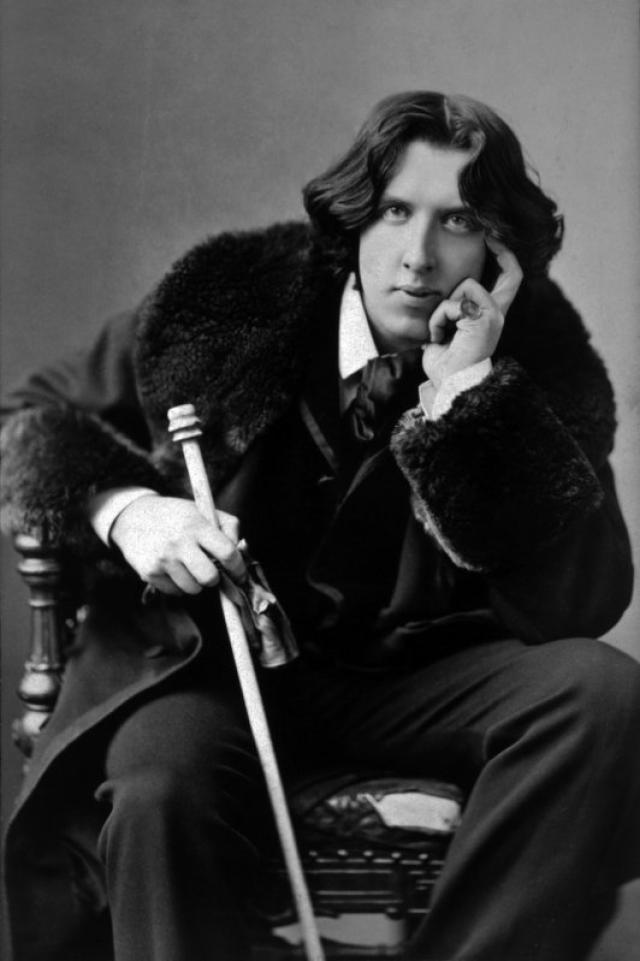
I came back so the world knew I was not dead. Death is the most boring thing apart from marriage or dinner with a teacher. "This little word is a typical example of the special humor that Oscar Wilde has shown throughout his life.
When the second session was organized, the remaining friends and relatives were naturally asked to
Present to try to get in touch with him. He took up the pen again, this time to write a much longer message than the preceding one.
This message was full of the romanticism of rose water that Oscar loved so much during his lifetime, and there are many phrases like "the red sunset must follow the apple-green dawn" Apple-green dawn ") or" year after year, the hawthorn bears blood-red fruit after the white death of may ".
The message ended on this call of despair "pity Oscar Wilde" ("Have mercy on Oscar Wilde)".
Persecuted during his lifetime for his homosexual inclinations, he died abandoned by his family and detested. But even in his last moments he did not lose his legendary humor, and his last words on his deathbed were "Either that wallpaper goes or I go" I am leaving !").
There is also a ghost at the "Adelphi Theater". This specter comes in the form of a man dressed all in black but wearing white gloves. Since he was very shy, no one managed to get near him until the 50s, when a caretaker cleaning the backstage came face to face with a box. After comparing what she had seen with pictures of the most famous actors in this theater, she found the identity of the ghost: William Terriss, a Victorian actor.
He was savagely assassinated by an off-axis as he went out through the back door. This offbeat was named Richard Arthur Prince, and he played a supporting role in a play where Terriss played the main character. After the murder he was arrested and accused of madness. He died 40 years later in Broadmoor Prison.

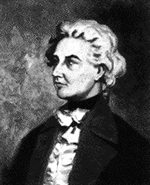 Name ;
Name ;




